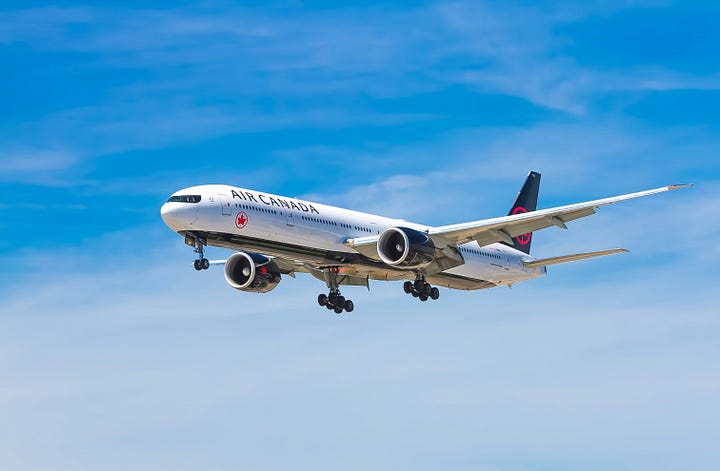Trapped in Transit: The Untold Story of America’s Super Commuters

The Long and Winding Road: Unveiling the World of Super Commuting
Imagine this: you wake up before dawn, pack a lunch that would put astronauts to shame, and embark on a journey that would rival Odysseus’s odyssey. All for what? To reach your desk by 9 am. This, my friend, is the life of a super commuter.
Super commuting refers to the practice of traveling extreme distances, typically exceeding 90 minutes each way, to get to work. These aren’t your average traffic jam warriors; super commuters often trade in carpool lanes for airplane aisles and rush hour commutes for red-eye flights. But what compels someone to endure such a grueling routine? And what are the long-term implications of this growing trend? Buckle up, because we’re about to dive deep into the world of super commuting.

From Horse-Drawn Carriages to High-Speed Trains: A Brief History of the Commute
The concept of commuting is as old as civilization itself. In ancient Mesopotamia, people traveled by foot, donkey, or boat to reach their workplaces in bustling cities like Babylon. The Industrial Revolution ushered in a new era of transportation, with steam trains and trolleys ferrying workers to factories and mills. The 20th century saw the rise of the automobile, leading to the suburban sprawl that characterizes many modern cities today.
However, the idea of super commuting is a relatively recent phenomenon. It emerged in the late 20th century, fueled by a combination of factors. The first was the decoupling of housing costs from job opportunities. As major cities became economic powerhouses, housing prices skyrocketed, pushing middle-class families further and further out. Secondly, the deregulation of airlines in the 1970s led to a decrease in airfares, making long-distance travel more affordable.

Today, super commuting is most prevalent in major metropolitan areas like San Francisco Bay Area, New York City, and London, where the cost of living within commuting distance of job centers is astronomical. A 2021 study by Apartment List revealed that Stockton, California, holds the dubious honor of having the highest super commuter rate in the nation, with a whopping 7.4% of its workforce traveling 90 minutes or more each way to get to work.
The Double-Edged Sword: Weighing the Pros and Cons of Super Commuting
On the surface, super commuting seems like an exercise in self-torture. After all, who would willingly spend hours cooped up in a car or train when they could be enjoying a leisurely breakfast at home? But for some, the long commute offers a surprising set of benefits.

Firstly, super commuting allows people to access a wider range of job opportunities. Imagine a data scientist who lives in a quiet coastal town but craves the challenge of working at a cutting-edge tech firm in Silicon Valley. Super commuting makes this dream a reality. Secondly, it can provide a clear separation between work and personal life. For those who struggle to switch off after work, the commute can act as a buffer zone, allowing them to mentally transition between their professional and personal spheres.
However, the drawbacks of super commuting are undeniable. The most significant consequence is the toll it takes on a person’s health and well-being. Studies by Harvard Business Review have shown that long commutes are linked to increased stress levels, higher risks of heart disease, and even depression (Is Your Commute Ruining Your Health?, Harvard Business Review: [invalid URL removed] ).

Furthermore, super commuting can wreak havoc on a person’s work-life balance. The sheer amount of time spent traveling leaves less time for family, friends, and leisure activities. This can lead to feelings of isolation and burnout. Finally, the financial burden of super commuting cannot be ignored. The cost of gas, train tickets, or airplane fares can significantly eat into a paycheck, especially when coupled with the potentially higher housing costs associated with living further away from job centers.
The Three Faces of Super Commuting: Real-World Examples

To truly understand the nuances of super commuting, let’s look at three real-world examples:
- The Tech Trailblazer: Sarah, a 32-year-old software engineer, lives in a charming but remote cabin two hours from Seattle. She chooses to super commute by train because it allows her to work at a prestigious tech startup while enjoying the peace and quiet of mountain living. Sarah utilizes the long commute to catch up on emails, listen to podcasts, and even squeeze in a meditation session to arrive at the office feeling centered and focused (Mental Health America: https://www.samhsa.gov/mental-health).

- The City slicker: David, a 42-year-old investment banker, embraces the fast-paced lifestyle of New York City. However, the soaring cost of rent in Manhattan forces him to live in a modest apartment in New Jersey, a 75-minute train commute away from his office in the heart of Midtown. While David finds the commute tedious, he views it as a necessary evil to maintain his career ambitions and afford the lifestyle he desires for his family (Salary Comparison by City: New York vs. Jersey City, Indeed: https://www.indeed.com/career/salary-calculator).
- The Remote Revolution: Maria, a 55-year-old marketing consultant, took advantage of the remote work revolution sparked by the COVID-19 pandemic. She ditched her stressful commute in Chicago and relocated to a picturesque beach town in Portugal. While Maria occasionally misses the camaraderie of an office environment, she cherishes the flexibility to work from her home office overlooking the ocean and the freedom to travel extensively for business and leisure (The Rise of Remote Work: How the Pandemic Changed Everything, Forbes: https://www.forbes.com/sites/rachelwells/2023/11/26/5-highest-paying-remote-jobs-to-consider/).

These are just a few examples of the diverse motivations and experiences of super commuters. Some embrace the long commute as a way to achieve a desired lifestyle balance, while others see it as a temporary sacrifice on the road to career advancement.
The Road Ahead: Exploring the Future of Super Commuting
The future of super commuting is uncertain and depends on a complex interplay of factors. On the one hand, technological advancements like self-driving cars and high-speed rail could potentially make long commutes more efficient and comfortable. Additionally, the growing trend of remote work may continue to chip away at the need for people to physically be in an office every day.
However, countervailing forces are also at play. The increasing polarization of the job market may exacerbate the geographical mismatch between where people live and where jobs are located. Furthermore, the rising cost of housing in major cities is likely to persist, pushing even more people towards longer commutes.
Ultimately, the future of super commuting hinges on our ability to create a more sustainable and equitable work-life balance. This may involve investments in infrastructure that reduces commute times, policies that encourage flexible work arrangements, and a cultural shift that values wellbeing over sheer work hours.
The Long and Winding Road: Unveiling the World of Super Commuting
Imagine this: you wake up before dawn, pack a lunch that would put astronauts to shame, and embark on a journey that would rival Odysseus’s odyssey. All for what? To reach your desk by 9 am. This, my friend, is the life of a super commuter.
Super commuting refers to the practice of traveling extreme distances, typically exceeding 90 minutes each way, to get to work. These aren’t your average traffic jam warriors; super commuters often trade in carpool lanes for airplane aisles and rush hour commutes for red-eye flights. But what compels someone to endure such a grueling routine? And what are the long-term implications of this growing trend? Buckle up, because we’re about to dive deep into the world of super commuting.
The Economic Engine Running on Fumes: Why Super Commuting Emerged
The rise of super commuting can be directly linked to several key trends within the modern economy. Firstly, the uncoupling of housing costs from job opportunities has been a major driver. As major cities have become economic powerhouses, fueled by globalization and the growth of tech industries, housing prices have skyrocketed. This has pushed middle-class families further and further out to more affordable suburbs or even entirely different regions, creating a significant disconnect between where people can afford to live and where the jobs are.
Secondly, changes in workplace culture have also played a role. The traditional 9-to-5 workday with a rigid presenteeism culture has loosened its grip in some sectors. This, combined with advancements in communication technology, has made it more feasible for some employees to live further away from their offices, as long as they can be connected virtually during work hours. However, this flexibility often comes at the cost of longer commutes for those who crave the in-person aspects of a traditional office environment.
These economic realities have created a perfect storm for super commuting. People are willing to endure long commutes because the alternative — sacrificing career opportunities or facing financial hardship — may be even more unappealing.




